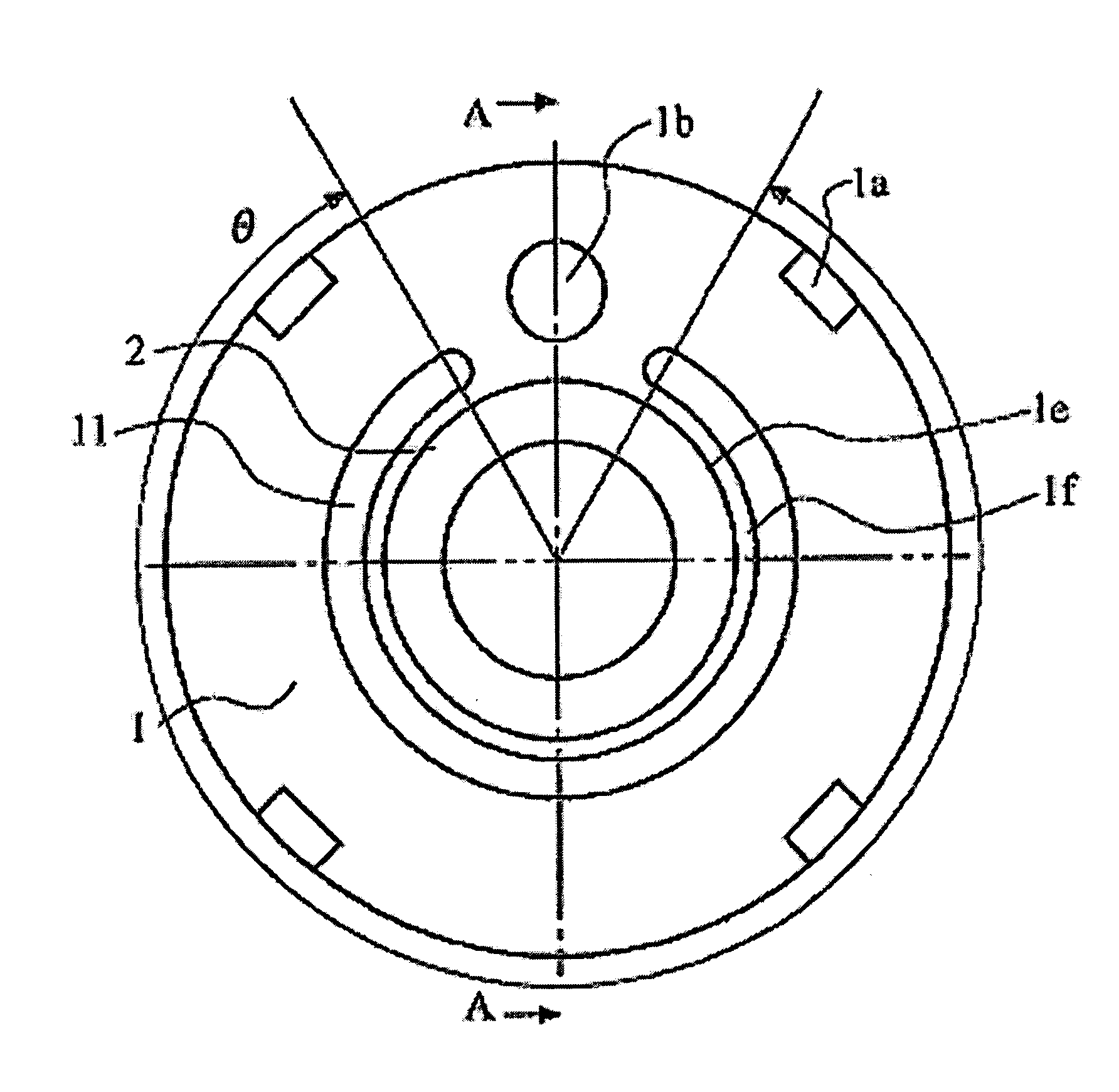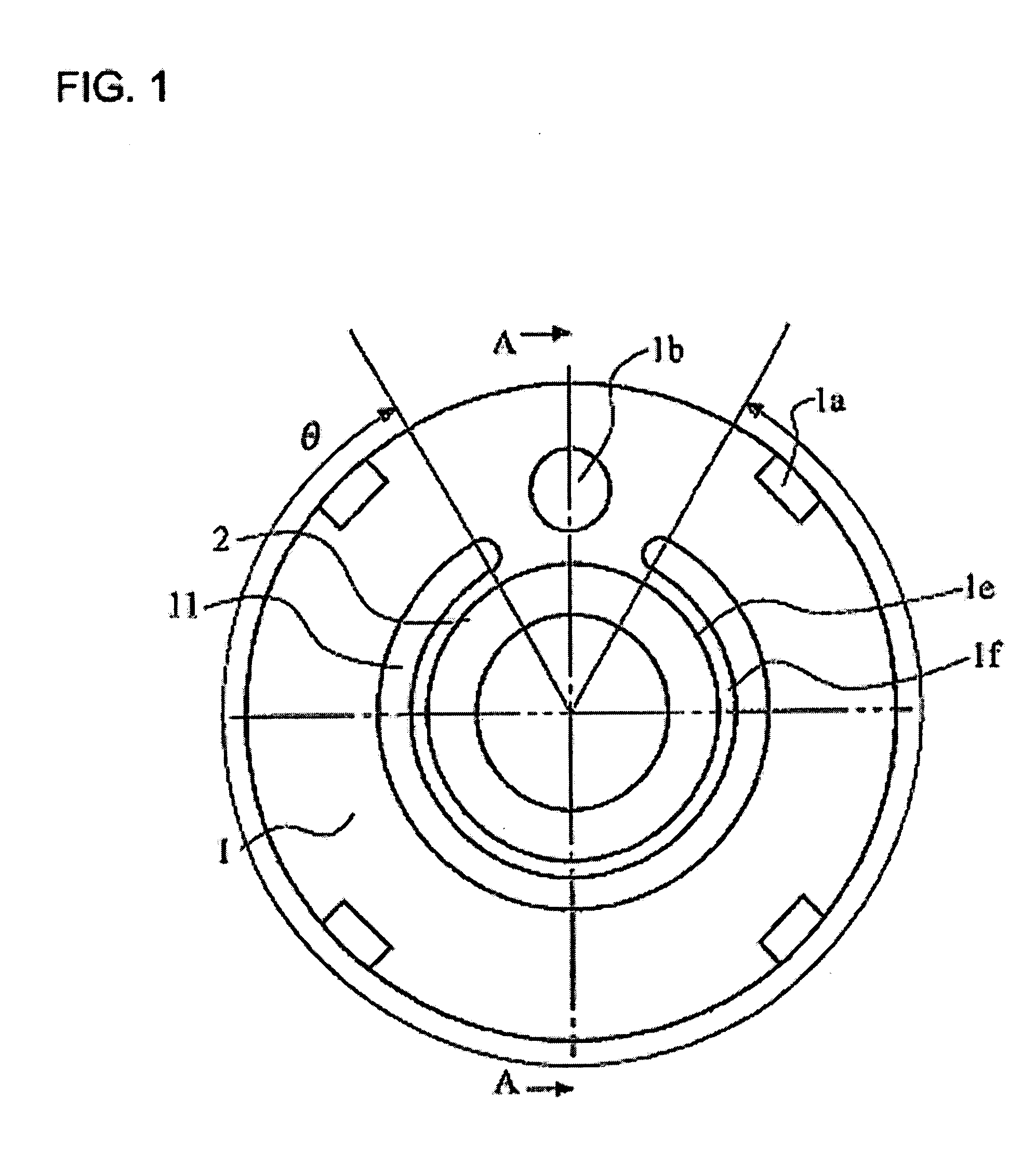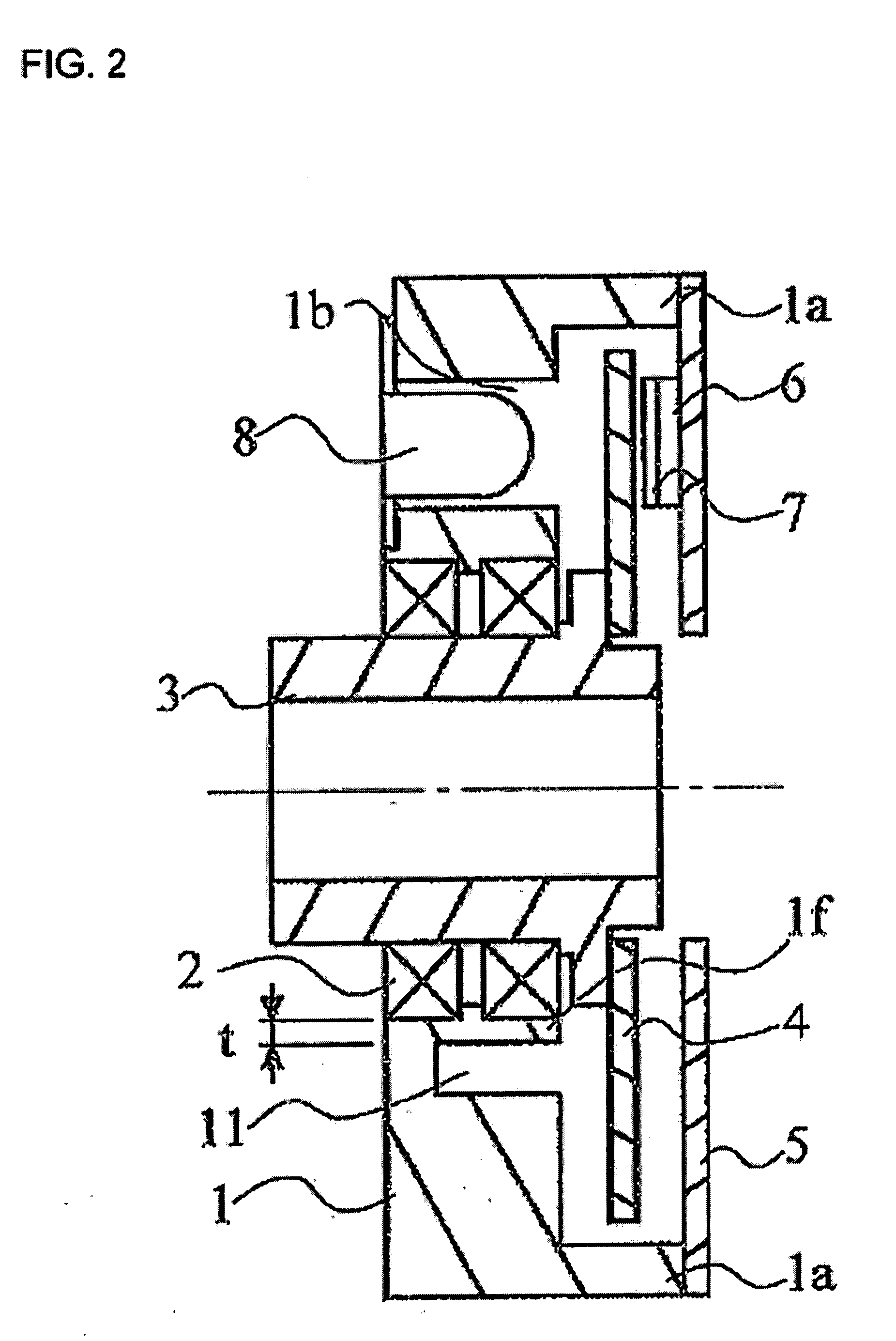Rotary Encoder
a rotary encoder and encoder technology, applied in the direction of dynamo-electric machines, measurement apparatus bearings/suspensions, measurement apparatus housings, etc., can solve the problems of unwanted mechanical stress or load of the rotary encoder, rotation irregularities or torque fluctuations, affecting the exact measurement of the rotational speed and the rotational position,
- Summary
- Abstract
- Description
- Claims
- Application Information
AI Technical Summary
Benefits of technology
Problems solved by technology
Method used
Image
Examples
Embodiment Construction
[0033]FIGS. 1 and 2 illustrate a rotary encoder according to an example embodiment of the present invention. FIG. 1 is a front view of the configuration of the rotary-transducer base member and the bearing area. FIG. 2 is a cross-sectional view taken along line A-A of FIG. 1, the view of FIG. 1 having been supplemented with further components of the rotary encoder. To make it easier to understand the arrangement, base-plate supports 1a, which are not actually located at this position in the cross-sectional view, are indicated in the view of FIG. 2.
[0034]According to the Figures, the rotary encoder includes a rotary-transducer base member 1, bearings 2 mounted at a bearing fixation region 1e of rotary-transducer base member 1, and a shaft 3 in the form of a hollow shaft which is mounted on bearings 2 and thereby retained in a manner allowing rotation. Two bearings 2 are used in this example. Shaft 3 is retained at two points by the two bearings disposed at a slight distance from each...
PUM
 Login to View More
Login to View More Abstract
Description
Claims
Application Information
 Login to View More
Login to View More - R&D
- Intellectual Property
- Life Sciences
- Materials
- Tech Scout
- Unparalleled Data Quality
- Higher Quality Content
- 60% Fewer Hallucinations
Browse by: Latest US Patents, China's latest patents, Technical Efficacy Thesaurus, Application Domain, Technology Topic, Popular Technical Reports.
© 2025 PatSnap. All rights reserved.Legal|Privacy policy|Modern Slavery Act Transparency Statement|Sitemap|About US| Contact US: help@patsnap.com



